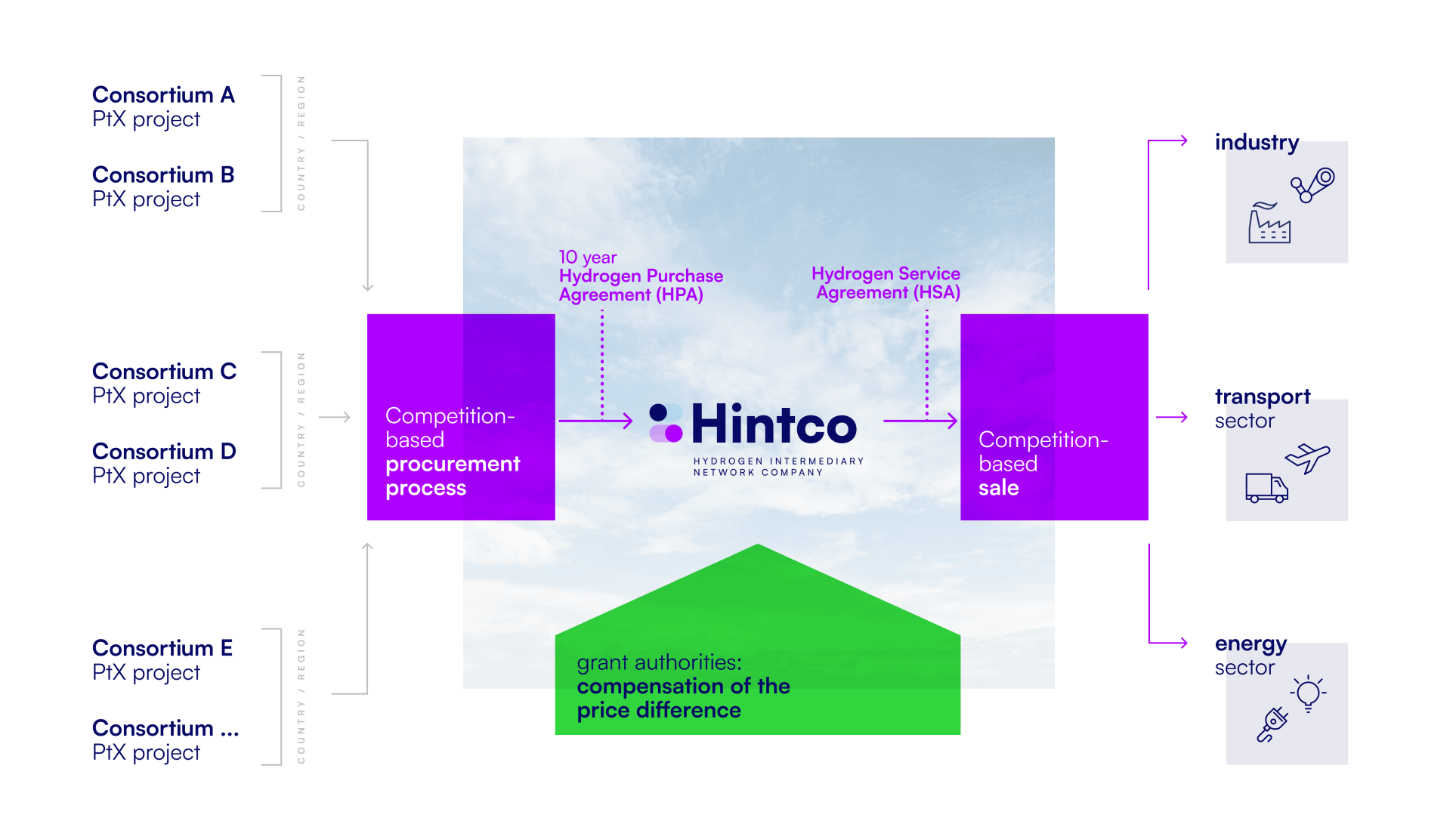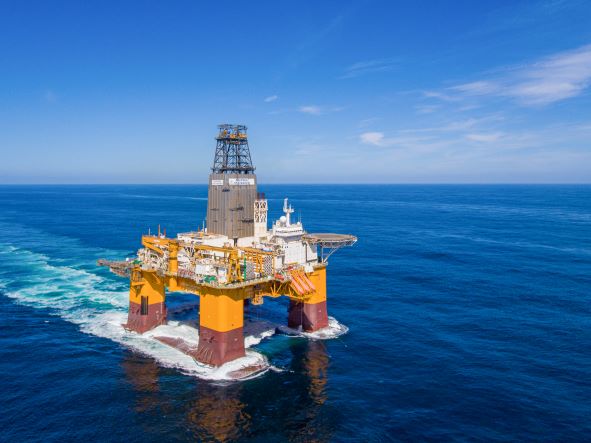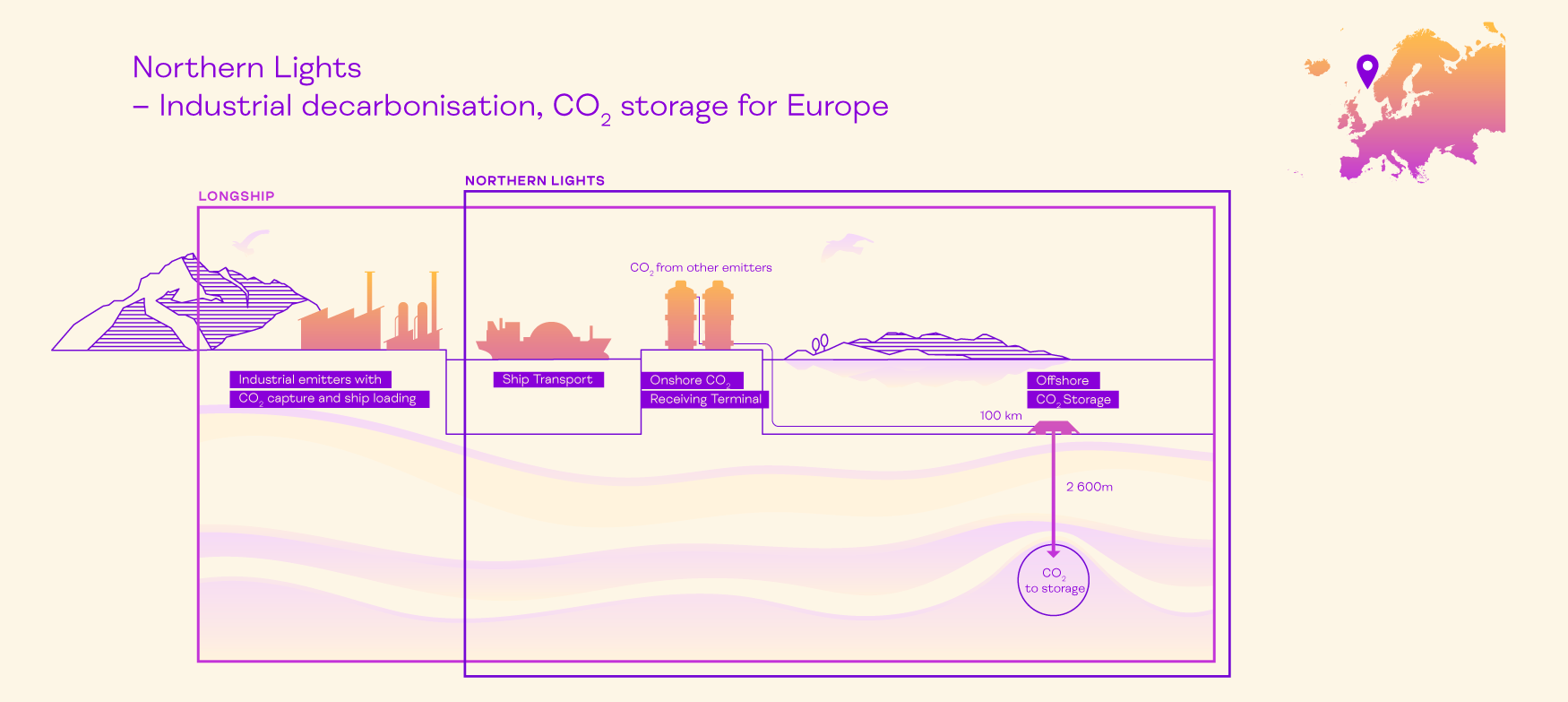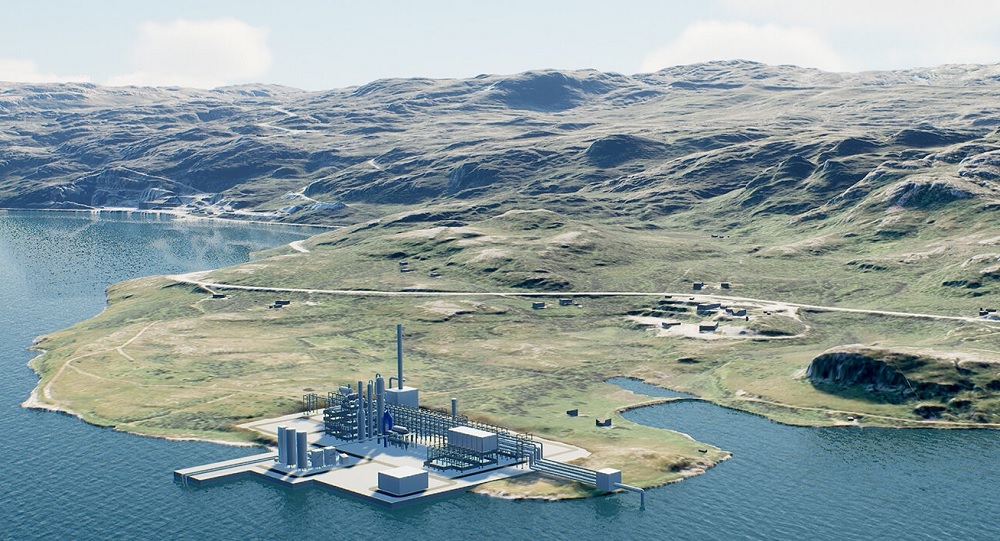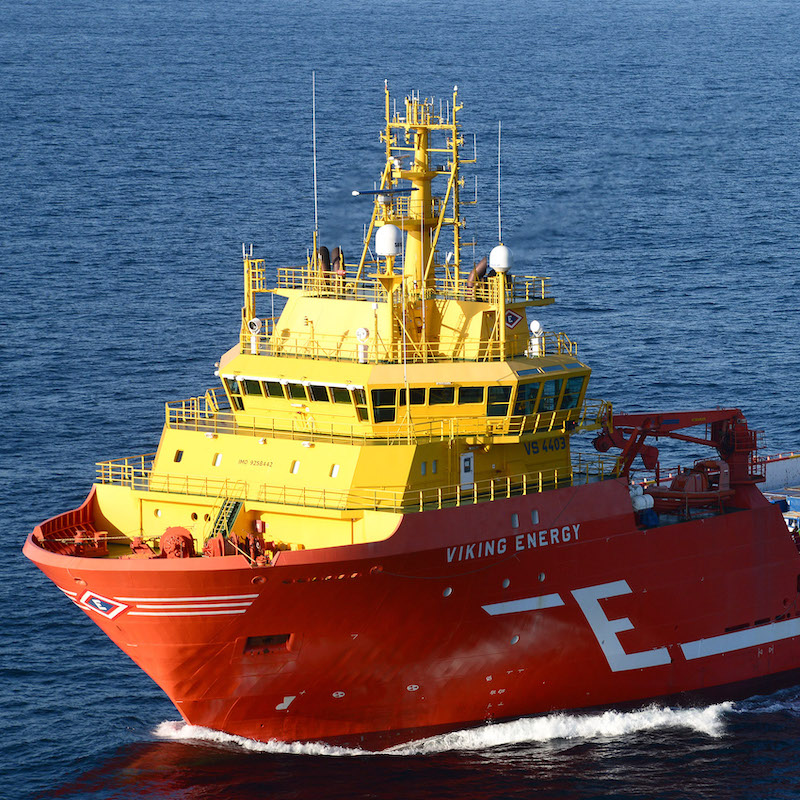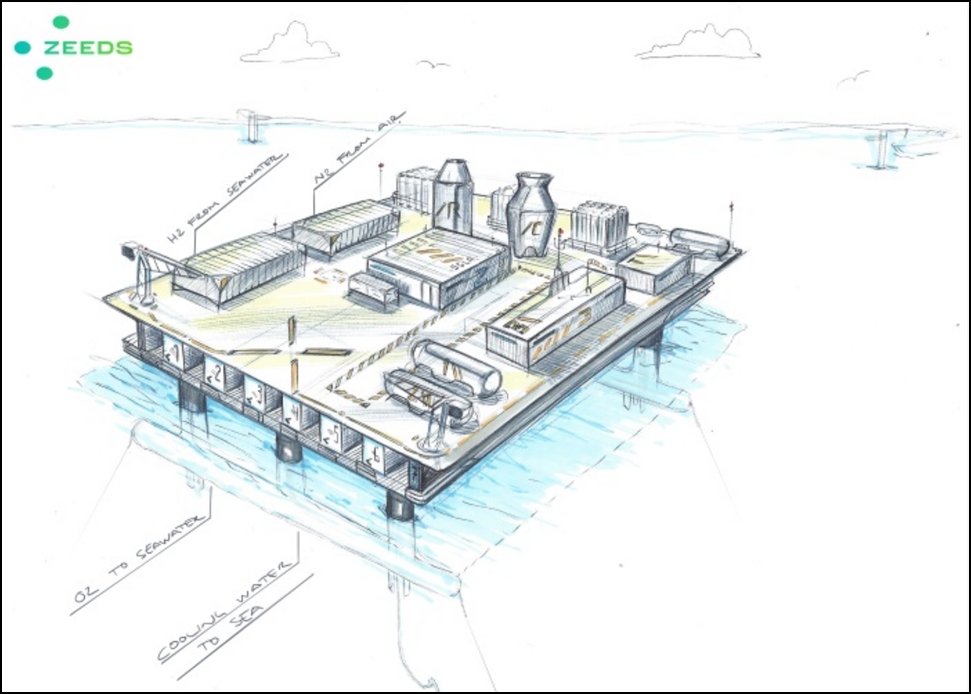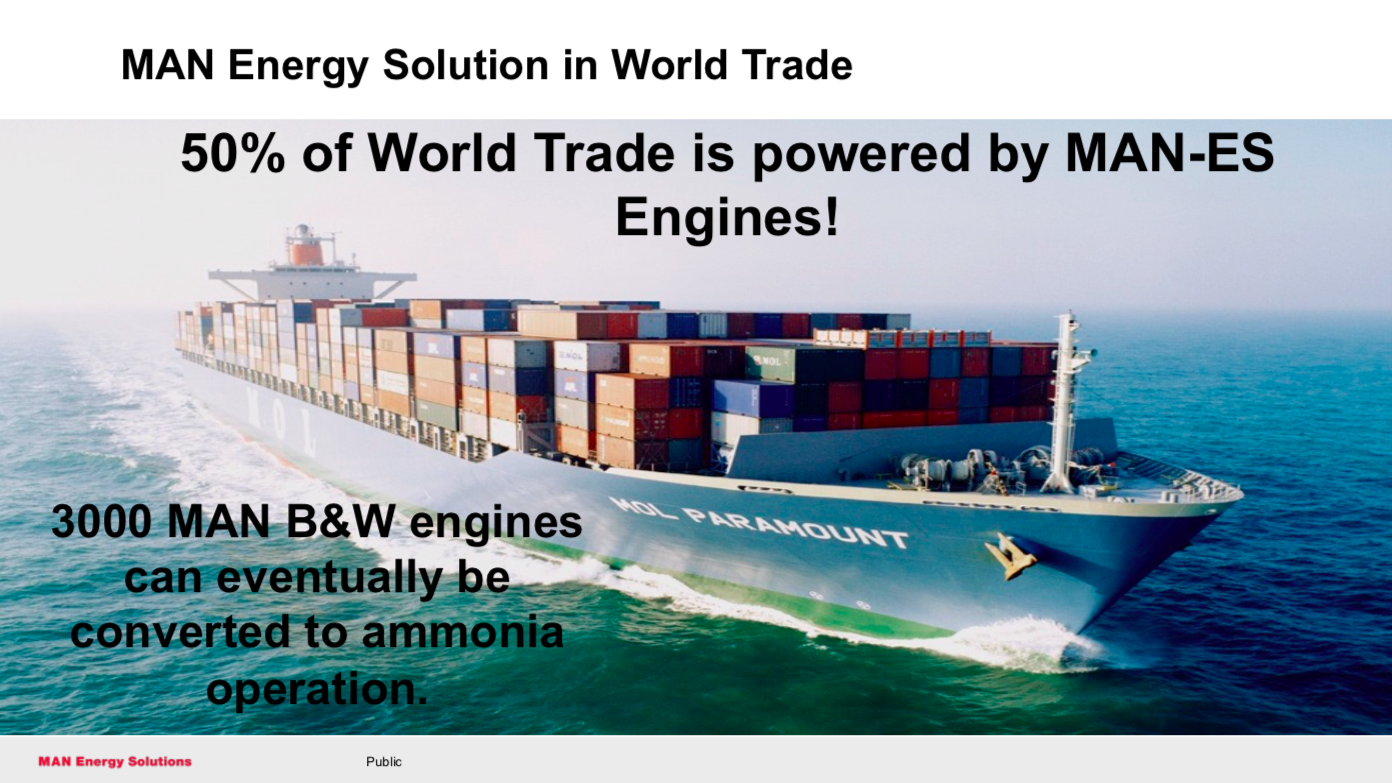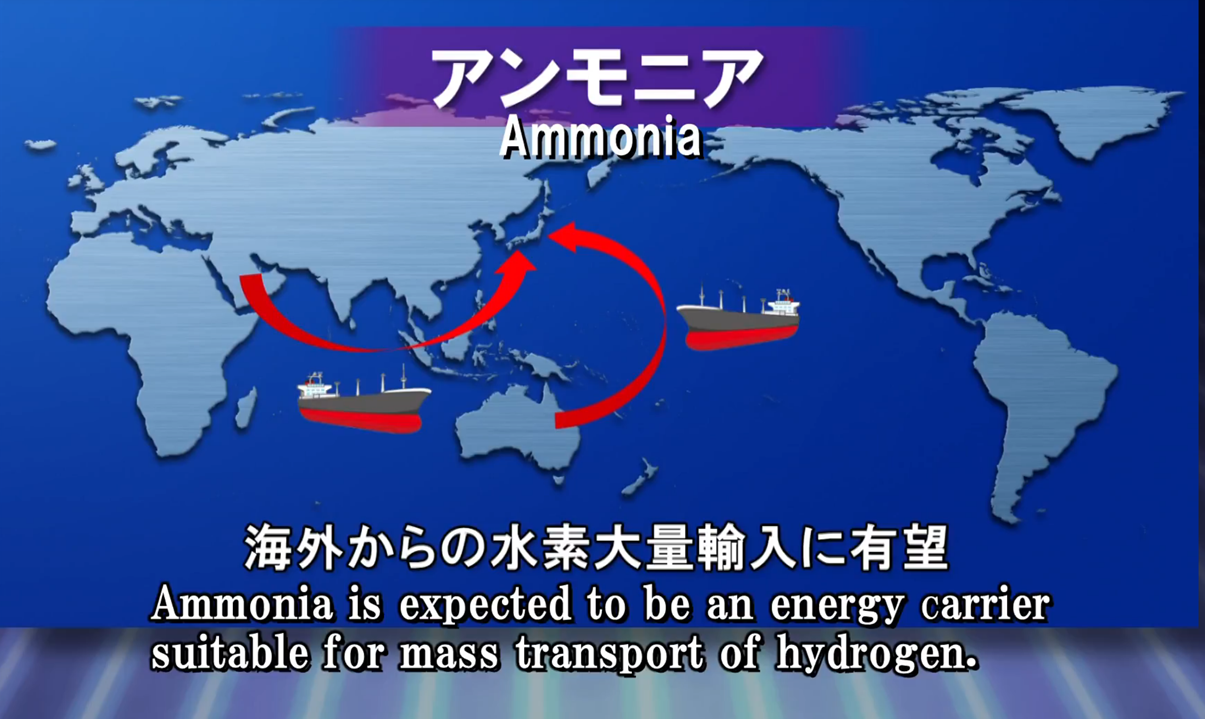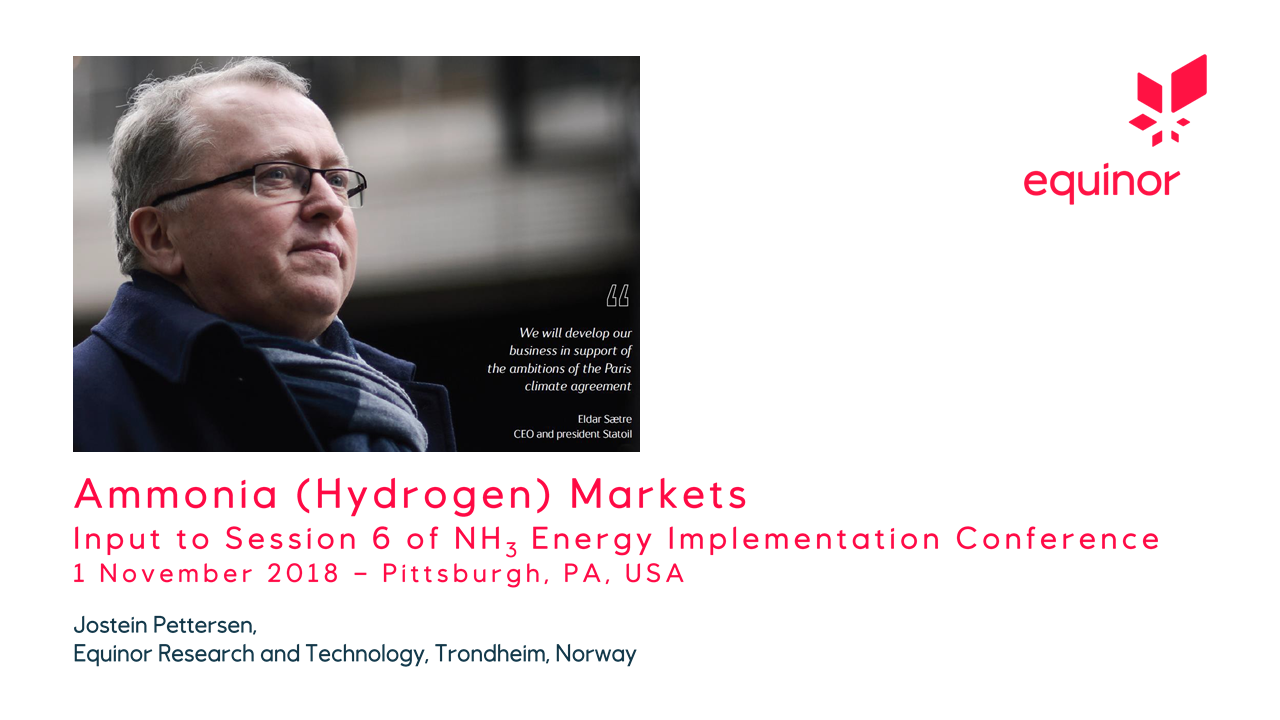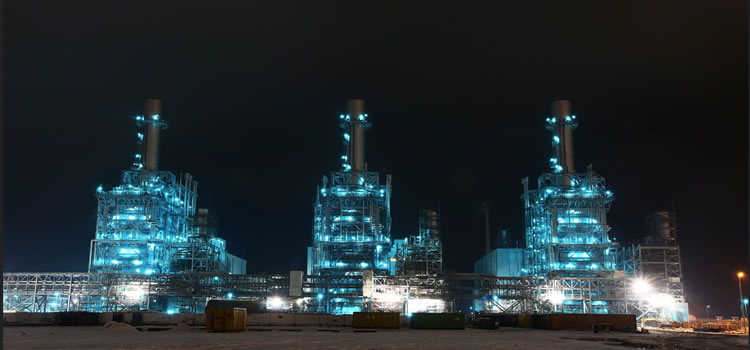Project partners Equinor, Shell and TotalEnergies taken FID to progress with phase two of the Northern Lights CCS project off Norway’s coast. The expansion will increase the CO2 transport and storage capacity from 1.5 million to a minimum of 5 million tons per year.
Content Related to Equinor
Equinor takes FID on key CCS projects in northern UK
Equinor has taken Final Investment Decision on two of the UK’s first-ever CCS projects, which will enable low-emission hydrogen and ammonia production at industrial sites on the Tees and Humber Rivers in northeast England.
Wärtsilä ammonia engine to power the Viking Energy
Wärtsilä has been contracted to supply the total technology package for the conversion of the Viking Energy to run on ammonia fuel. The original plan to retrofit the vessel with a 2 MW solid oxide fuel cell system was delayed by supply chain and development challenges, but SOFC developer Alma Clean Power will continue to test and scale its direct ammonia-fed technology for maritime applications.
Viking Energy vessel awarded AiP
The Norwegian Maritime Authority has approved the ammonia fuel system design to be deployed onboard the platform supply vessel Viking Energy. The system will directly feed 2 MW of solid oxide fuel cells, allowing for long-range, high power sailing of up to 3,000 hours per year.
New bunkering partnerships to unlock ammonia fuel market
Yara and Bunker Holding will look to accelerate the supply of ammonia bunker fuel to first movers in the shipping industry, focusing on key trading routes and port locations. In Norway, Equinor and Azane Fuel Solutions will undertake a new project, aiming to demonstrate how Norway’s offshore sector can be decarbonised by 2030 via the use of clean ammonia fuel.
H2Global launches first green ammonia tender
H2Global has launched its first tender process for the import of “green” ammonia into Europe, with a €360 million, ten year contract on offer beginning in 2024. In Germany, public gas company VNG and Total Eren will work towards ammonia imports into Rostock from 2028. VNG is already developing a significant clean production & import hub at Rostock, after an agreement with Equinor earlier this year.
COP27: the Green Shipping Challenge
The US and Norway launched the Green Shipping Challenge in Sharm el-Sheikh this month. The Challenge encompasses more than forty different announcements & initiatives, including ammonia fuel production in Namibia, ammonia-powered cargo shipping in Finland, ammonia-powered pilot vessels in Norway's Green Shipping Programme, and a host of new green corridor projects. A trio of new reports have also provided an assessment of progress to date in green corridor development, and suggested key next steps.
New CCS partnerships in the USA
This week we explore three new partnerships for CCS-based ammonia production in the USA:
- CF Industries, ExxonMobil & EnLink Midstream, for decarbonisation of the Donaldsonville production plant in Louisiana.
- Air Liquide, Chevron, LyondellBasell, and Uniper for a new production facility on the Gulf Coast.
- And Tallgrass & Equinor for the potential production of hydrogen and ammonia across the USA, leveraging Tallgrass’ existing infrastructure network.
KBR: ammonia-powered offshore drilling
KBR, Odfjell, Equinor and Wärtsilä will all collaborate to study conversion of diesel generators on board semi-submersible, offshore drilling vessels to ammonia-fueled generators. On-board power for equipment and heavy machinery on these vessels is typically provided by fossil-fed generators. As fuel costs increase, operators are looking to new energy solutions including offshore wind and alternative fuels like hydrogen & ammonia.
Yara & Northern Lights ink key CCS deal
Yara and Northern Lights have signed the world’s first commercial agreement for cross border CO2 transport and storage. Emissions from the Sluiskil production plant in the Netherlands will be captured, processed and transported for sequestration at the Northern Lights storage site off the coast of Norway. Yara is pursuing multiple decarbonisation options for the Sluiskil plant, including this CCS announcement, waste hydrogen, and offshore wind-to-hydrogen as part of Ørsted’s larger SeaH2Land project.
NOV: Subsea storage of fuel ammonia
A high-profile industry consortium (including Equinor, Shell and ABS) will validate NOV’s subsea fuel storage system. NOV argues subsea storage will be a crucial element for effective distribution of ammonia as an alternative maritime fuel. Validation testing is expected to be completed by the end of next year, with the first projects deployed late 2024 to 2025.
Barents Blue ammonia plant gains new partners, set to triple in size
This week Horisont Energi, Equinor and Vår Energi entered into a new cooperation agreement for development of the Barents Blue facility, and also revealed the project is set to triple in size from 1 million tonnes per year blue ammonia to 3 million.
The Ammonia Wrap: an ammonia-powered shipping network in northern Europe and more
This week: an ammonia-powered shipping network in northern Europe, Sluiskil update, green projects in Uruguay, green ammonia in Ireland: a new update!, Euronav to develop ammonia-powered tankers, ammonia part of Equinor's net-zero by 2050 strategy, H2Site to install first on-site crackers in France and updates from Australia.
The Ammonia Wrap: two new large-scale ammonia projects in the UAE and more
Welcome to the Ammonia Wrap: a summary of all the latest announcements, news items and publications about ammonia energy. This week: two new large-scale ammonia projects in the UAE, RWE, BASF combine for 2 GW "Offshore-to-X" project, green ammonia exports from Tasmania, coal co-combustion trials in Japan, Japanese shipping industry chases decarbonisation, South Korean companies join together in local green ammonia consortium, new funding for ammonia-from-wastewater research and Horisont Energi and Equinor join forces for the Polaris project.
Ammonia Energy Live February - 2021
Last week we presented the first episode in our monthly webinar series: Ammonia Energy Live. Every month we’ll explore the wonderful world of ammonia energy and the role it will play in global decarbonisation - with an Australian twist. To kick things off we wanted to set the scene for 2021 and give you a sense of where the ammonia transition is at - key projects, key milestones and things to be excited about going forward. And, since this is an Australian-focused series, we wanted to explore what’s important about Australia to the ongoing work of the AEA.
Viking Energy to be retrofit for ammonia fuel in 2024
This morning, it was announced that the "Viking Energy," a supply vessel for Equinor's offshore operations, will be modified to run on a 2 MW direct ammonia fuel cell. This will be a five year project: the technology will be scaled-up on land before being installed on the vessel, which will begin a year of GHG emission-free operations in 2024. The Norwegian partners leading this "world's first" project include shipowner Eidesvik, contractor Equinor, and ammonia producer Yara, as well as Wärtsilä (Wärtsilä Norway), responsible for power technology and ammonia storage and distribution systems, and Prototech, delivering the fuel cell system.
The maritime sector's ammonia learning curve: moving from scenario analysis to product development
ANNUAL REVIEW 2019: The maritime industry is learning about ammonia fast. It is searching for a new bunker fuel, and ammonia is one of the few options that can realistically deliver a 50% reduction in the sector's GHG emissions by 2050. The IMO declared this target in April 2018 and, in last year's Annual Review, I wrote about all the reports that were published demonstrating that ammonia could deliver this outcome. In the last 12 months, by contrast, we have moved quickly beyond analysis and into engineering design, technology testing, and product development.
Green ammonia: Haldor Topsoe's solid oxide electrolyzer
Haldor Topsoe has greatly improved the near-term prospects for green ammonia by announcing a demonstration of its next-generation ammonia synthesis plant. This new technology uses a solid oxide electrolysis cell to make synthesis gas (hydrogen and nitrogen), which feeds Haldor Topsoe's existing technology: the Haber-Bosch plant. The product is ammonia, made from air, water, and renewable electricity. The "SOC4NH3" project was recently awarded funds from the Danish Energy Agency, allowing Haldor Topsoe to demonstrate the system with its academic partners, and to deliver a feasibility study for a small industrial-scale green ammonia pilot plant, which it hopes to build by 2025. There are two dimensions to this technology that make it so important: its credibility and its efficiency.
Stanford Convenes Hydrogen Focus Group
ANNOUNCEMENT: California's Stanford University held a two-day workshop this week to launch a new effort aimed at advancing hydrogen “for stable, long-term, low-carbon energy storage.” The Stanford Hydrogen Focus Group intends to support research, serve as a technical resource, and disseminate information via workshops and symposia.
MAN Energy Solutions: an ammonia engine for the maritime sector
In June 2018, MAN Diesel & Turbo rebranded itself MAN Energy Solutions, reflecting the maritime engine market leader's "strategic and technological transformation" towards sustainability. The company was "taking a stand for the Paris Climate Agreement and the global pursuit of a carbon-neutral economy." According to Uwe Lauber, Chairman of the Board, "our activities have a significant impact on the global economy. In shipping, for example, we move more than half of the global stream of goods ... [and] the path to decarbonising the maritime economy starts with fuel decarbonisation, especially in container shipping." This week, the company took a significant step towards realizing its vision, disclosing that it is "pressing ahead with developing ... an ammonia-fuelled engine." This builds on the technology development pathway that MAN ES presented at the NH3 Energy+ Topical Conference at Pittsburgh in October 2018. The budget and timeline are set: the €5 million (USD$5.7 million) project will last two to three years and, if the shipowners decide to deploy the finished product, "the first ammonia engine could then be in operation by early 2022."
Fossil Energy Companies Turn to Ammonia
In the last 12 months ... National oil companies in Europe and the Middle East are looking to satisfy East Asian demand for clean hydrogen by exporting carbon-free ammonia. One of the biggest global LNG exporters is investigating ammonia for the same market, as it considers Australia's future as a renewable energy exporter. Oil majors are assessing ammonia's role in implementing an affordable hydrogen economy, looking toward fuel markets in California and Europe. And the biggest coal producer in China is funding the development of "the world’s first practical ammonia-powered vehicle."
Power-to-Ammonia: the Economic Viability of Ammonia Energy
In the last 12 months ... The extensive Power-to-Ammonia feasibility study demonstrated that ammonia energy could be economically viable in different business cases. The report was a collaborative effort by large European corporations - power companies, electricity distributors, chemical producers, engineering firms - and it has already resulted in plans for one 440 MW power plant to be converted to carbon-free fuel by 2023.
Ammonia for grid-scale power: Nuon, Gasunie, and Statoil
A new collaboration was announced last week, between Dutch power company Nuon, European natural gas pipeline operator Gasunie, and Norwegian oil major Statoil. The joint venture will look at converting one of the Magnum power plant's three 440 MW gasifiers, with hopes to have it running on hydrogen fuel by 2023. This is the continuation of the Power to Ammonia project and, although ammonia is not expected to be used in this particular stage of the project, converting Magnum to hydrogen fuel represents the "intermediate step" to demonstrate that "where hydrogen could be produced using natural gas by 2023, from the year 2030 it could be possible to produce it with sustainably produced ammonia ... Ammonia then effectively serves as a storage medium for hydrogen, making Magnum a super battery."



